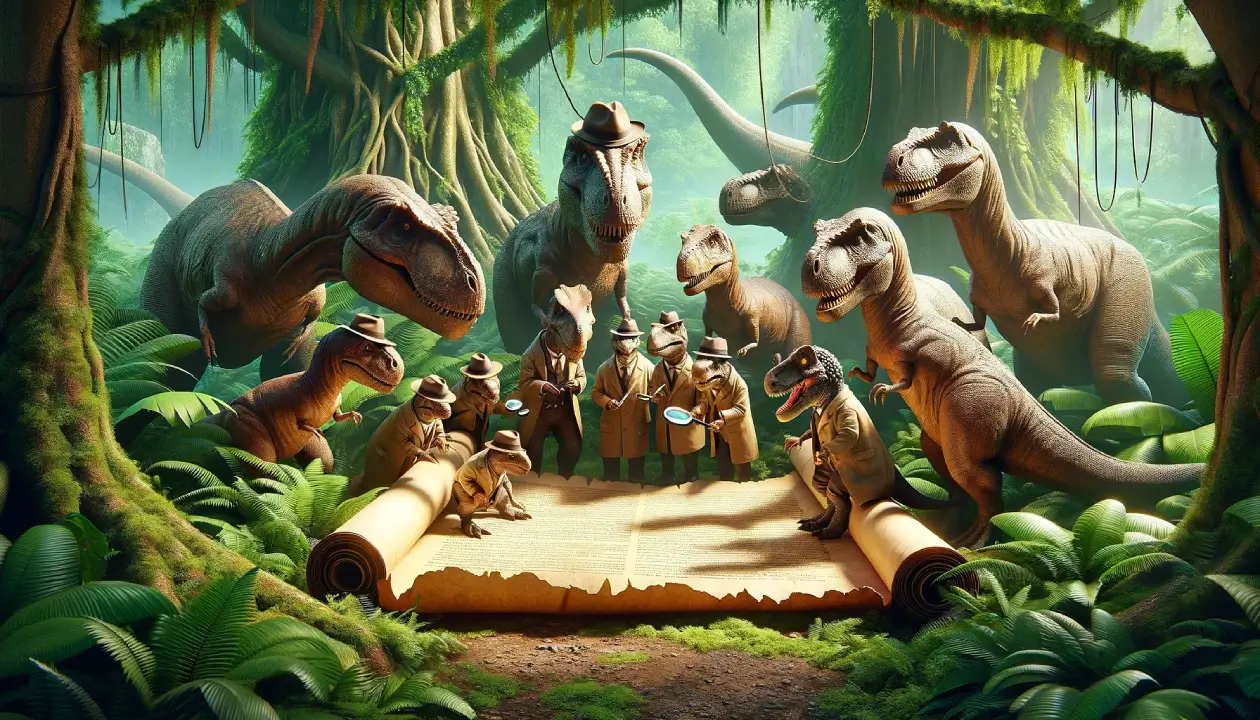Dinosaurs lived during the Mesozoic Era, a period spanning around 180 million years from about 250 to 65 million years ago. Understanding when dinosaurs lived is crucial for learning about the evolution of life on Earth and the history of our planet.
Dinosaurs were the dominant terrestrial vertebrates for over 135 million years, and their reign ended with the Cretaceous–Paleogene extinction event about 66 million years ago.
| Key Question | Summary |
|---|---|
| When did dinosaurs live? | Dinosaurs lived during the Mesozoic Era from 252 to 66 million years ago. |
| What are the 3 periods of the Mesozoic Era? | Triassic, Jurassic, and Cretaceous periods. |
| What were early Triassic dinosaurs? | Small theropods, sauropodomorphs, primitive ornithischians. |
| What were the dominant Jurassic dinosaurs? | Sauropods, theropods, stegosaurs, ornithopods. |
| What were the dominant Cretaceous dinosaurs? | Tyrannosaurs, ceratopsians, ankylosaurs, pachycephalosaurs. |
| How did the dinosaur age end? | The Cretaceous-Paleogene extinction event around 66 million years ago. |
The Mesozoic Era
The Mesozoic Era lasted around 186 million years, from 252 to 66 million years ago. This era saw the breakup of the supercontinent Pangaea and subsequent drift of continents to their present-day positions.
The Mesozoic Era is known as the “Age of Reptiles” since reptiles dominated both marine and terrestrial ecosystems. This era is defined by the rise and reign of dinosaurs, as well as the first appearance of mammals, birds, and flowering plants.
The Mesozoic Era contains three major periods – the Triassic, Jurassic, and Cretaceous. Each period marked important developments in the types and dominance of dinosaur species:
- Triassic Period (252 – 201 million years ago) – Appearance and diversification of early dinosaurs
- Jurassic Period (201 – 145 million years ago) – Prominence of sauropods and theropods
- Cretaceous Period (145 – 66 million years ago) – Rise to dominance of tyranosaurs and horned dinosaurs
The Triassic Period
The Triassic Period lasted from about 252 to 201 million years ago, marking the beginning of the Age of Dinosaurs. This period saw early dinosaurs emerge and begin to diversify into new forms.
Key facts about the Triassic Period:
| Timeframe | 252 to 201 million years ago |
| Continents | Pangaea began to split apart |
| Dominant Dinosaurs | Saurosuchids, theropods, prosauropods, primitive ornithischians |
| Climate | Relatively dry and hot |
| Plant Life | Conifers, ferns, cycads |
The first dinosaurs emerged around 230 million years ago during the Triassic Period. These included small, nimble theropods and larger herbivorous dinosaurs like sauropodomorphs. Early theropods like Eoraptor and Herrerasaurus were small, bipedal predators. Large, long-necked sauropodomorphs like Plateosaurus were ancestral to later massive sauropods. More primitive ornithischians like Pisanosaurus also appeared.
The Triassic also had large reptiles that predated dinosaurs, like rauisuchids and phytosaurs. But by the end of the Triassic, dinosaurs had become the dominant terrestrial vertebrates paving the way for their reign in the Jurassic.
The Jurassic Period
The Jurassic Period lasted from about 201 to 145 million years ago. This period saw giant sauropods like Brachiosaurus and Diplodocus thrive along with fierce theropods like Allosaurus and Ceratosaurus.
Some key facts about the Jurassic Period:
| Timeframe | 201 to 145 million years ago |
| Continents | Pangaea splitting into Laurasia and Gondwana |
| Dominant Dinosaurs | Sauropods, theropods, stegosaurs, ornithopods |
| Climate | Warm and moist |
| Plant Life | Flowering plants, cycads, conifers |
The Jurassic Period is known for the prominence and diversity of giant sauropod dinosaurs like Brachiosaurus, Diplodocus, Apatosaurus, and Brontosaurus. These long-necked plant eaters reached lengths over 30 meters (100 feet).
Fierce theropod carnivores like Allosaurus and Ceratosaurus hunted sauropods and other dinosaurs. The Jurassic also saw stegosaurs with their plated armor and ornithopods like Camptosaurus appear.
The Cretaceous Period
The Cretaceous Period lasted from about 145 to 66 million years ago, marking the latter part of the Age of Dinosaurs. It ended with the Cretaceous-Paleogene mass extinction.
Key facts about the Cretaceous Period:
| Timeframe | 145 to 66 million years ago |
| Continents | Continents nearing present-day positions |
| Dominant Dinosaurs | Tyrannosaurs, ceratopsians, ankylosaurs, pachycephalosaurs |
| Climate | Relatively warm, shallow inland seas |
| Plant Life | Flowering plants flourished, new insects |
The Cretaceous saw the rise of the tyrannosaurs like Tyrannosaurus rex, which dominated the latter part of the period. Horned ceratopsians like Triceratops, armored ankylosaurs, and dome-headed pachycephalosaurs also thrived.
Flowering plants and new insect species evolved, creating new ecological niches. The climate remained relatively warm, leading to high eustatic sea levels worldwide.
The End of Dinosaurs
The Mesozoic Era ended around 66 million years ago with the Cretaceous–Paleogene extinction event, which wiped out around 75% of plant and animal species on Earth. Most famously, all non-avian dinosaurs went extinct.
This mass extinction was likely caused by multiple catastrophic events including an asteroid impact, volcanic eruptions, climate change, and ecological shifts. The asteroid impact at the Chicxulub crater in Mexico delivered the final blow, releasing copious dust and debris that led to drastic global climate change incompatible with dinosaur survival.
Conclusion
In summary, dinosaurs lived during the Mesozoic Era from about 252 to 66 million years ago. This era contained the Triassic, Jurassic and Cretaceous periods, each marked by distinct dinosaur species and ecological conditions. The dinosaurs’ reign ended abruptly around 66 million years ago with the Cretaceous-Paleogene mass extinction event, paving the way for mammalian dominance on Earth.









